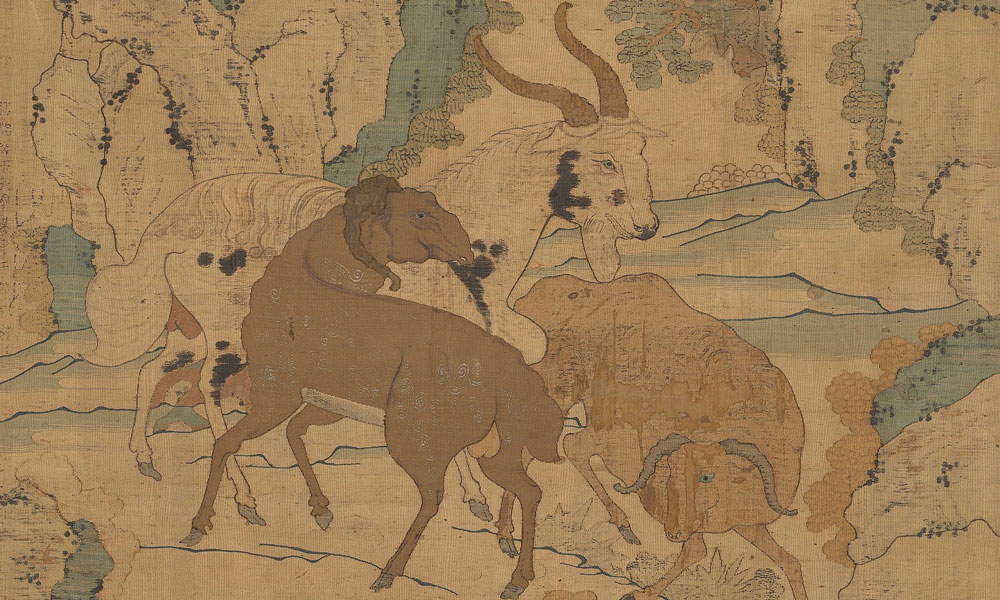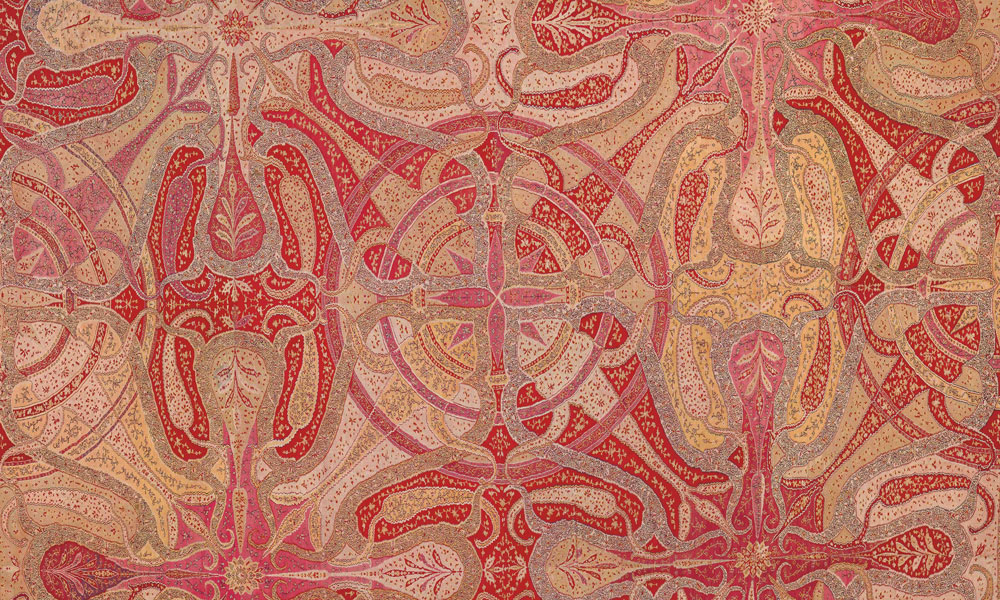Textiles at Asian Art in London, 31 October-9 November 2019
Many exhibits, discussions and talks are taking place in the heart of the British capital as part of Asian Art in London, 31 October-9 November. There are two notable textile exhibits during the annual celebration of Asian art:

Detail of Three Rams Heralding Spring (San yang kai tai) kesi panel, China, Ming dynasty, dated Hongzhi, 1493. Inscribed on the left side: ‘fourth month in the cyclical year guichou in the Hongzhi reign…Wu zhong’. Wu zhong may refer to the region of present day Suzhou which was famous for silk weaving for the court
Jacqueline Simcox’s exhibition is at Stoppenbach & Delestre on Ryder Street, featuring a rare kesi panel of Three Rams Heralding Spring (San yang kai tai), and other Chinese silk textiles. The kesi panel (detail above) depicts curly coated rams standing beside a stream amongst rocks, pine trees and lingzhi fungus, with two bats in flight below a sun disc. This is a famous subject and may be compared to a pair of embroidered scrolls of nine rams heralding Spring divided between The National Palace Museum, Taipei and the The Metropolitan Museum of Art, New York. The subject is from the early Ming period and embodies the favourite pastime of wordplay, beloved of Chinese designers.
The word yang signifies ‘the sun’, a homonym of the Chinese word for ‘goat’. The word kai means ‘heralding’, while the word tai indicates not only a ‘prince’ (seen as a young boy in the two museum scrolls) but ‘fortune’—which was associated with the Spring and Chinese New Year. The word for ‘bat’ is a play on the word for ‘joy’, while the lingzhi fungus symbolises happiness and good fortune.
Textiles on display at Simon Ray’s gallery on King Street include a Kashmir shawl from India, circa 1840. The Mandala Chandar (detail above) is a fine and highly unusual tantric moon shawl (chandar) with a mandala to the centre from which radiate zoomorphic tendrils, filled with multi-coloured millefleurs on a pink ground. The tendrils form four cusped palmettes that meet in the central mandala, and spread outwards into large symmetrical rosettes, possibly highly stylised lotus flowers (symbolically with eight petals), each with three other identical palmettes at each corner. Each of the lotus rosettes occupies a quarter of the shawl, with the complex, overlapping leaves, flowers and tendrils forming a square to the centre. Interspersed with the palmettes are smaller palmettes with horn-like tendrils that grow from their point. Within these large lotus rosettes are patterns of floral sprays, bent-tipped botehs, tendrils and millefleurs that penetrate the central square, all in various shades of red, pink and orange. Again symmetrical, they differ only in their base colourings.
Reflecting the central mandala to the centre of the shawl are semi-circular half mandalas to the centre of each side of the shawl and quarter mandalas to each corner. Together with central mandala and the four squares within each lotus rosette, the shawl generates a feeling of radiant, mystical power.Framing the central design are thin hashia strips composed of floral meanders. The hashia strips are green to the top and bottom of the shawl and red to the sides.
The mandala is an English version of a Sanskrit word meaning ‘circle’, with connotations of centre and arch. It is a symbol of man or woman in the world, and is often illustrated by an imaginary palace that is contemplated during meditation. Here, the circles of enlightenment are surrounded possibly by lotus flowers, which symbolise the open state of devotion, needed to enter the palace. The enigmatic forms of this shawl bring to mind both the Mahayana Buddhist thangkas of Tibet and the mystical tantric paintings of the Jains.




























Comments [0] Sign in to comment